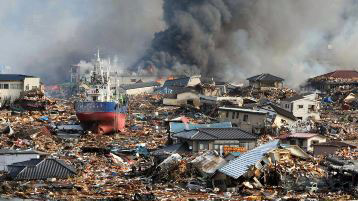Industrial and other Manmade Disasters
Man-made floods in Orissa in September 2011- Key issues raised by Water Initiatives Orissa
Posted on 06 Oct, 2011 10:24 AMOrissa was hit by two spates of flood in September 2011, the first one being caused by heavy rains in the Mahanadi catchment and release of huge discharges from Hirakud dam. The second one was caused by heavy rains and flooding of Brahmani, Baitarani and Budhabalanga rivers. These floods point to the loopholes in river basin planning and management and calls for urgent attention of planners and policy makers.
Different designs, same management: A note from Water Initiatives Odisha on Rengali dam and flood management
Posted on 28 Sep, 2011 09:57 AMWater Initiatives Odisha, brings out a special note on this issue in response to the latest spell of the flood disaster in northern Odisha Rivers.
Himachal Pradesh state policy on disaster management (2011)
Posted on 25 Sep, 2011 04:28 PMMain hazards that the state is prone to consist of earthquakes, landslides, flash floods, snow storms and avalanches, droughts, dam failures, fires – domestic and wild, accidents – road, rail, air, stampedes, boat capsizing, biological, industrial and hazardous chemicals etc.
Goa, going, gone – A film by Carmen Miranda on Goa’s mining
Posted on 24 Sep, 2011 03:03 PMGoa, going, gone – A film by Carmen Miranda on Goa’s mining
As you may have assumed from its title, “Goa, going gone” is about Goa - - or more specifically, it’s about the environmental impact that is likely to result from the rampant mining that is underway in the state. Goa is being dug out of existence and gigantic craters expand across a 95 km long mining belt.
Disaster management in India – A report by Ministry of Home Affairs
Posted on 09 Sep, 2011 05:28 PMThe perception about disaster and its management has undergone a change following the enactment of the Disaster Management Act, 2005. The definition of disaster is now all encompassing, which includes not only the events emanating from natural and man-made causes, but even those events which are caused by accident or negligence.
Rural drinking water supply and sanitation - Standard operating procedure for responding to natural disasters - Department of Drinking Water and Sanitation
Posted on 05 Aug, 2011 08:37 PMThis standard operating procedure developed by the Department of Drinking Water and Sanitation includes all functions pertaining to disaster prevention, institutional mechanism, preparedness, early warning, relief, recovery and rehabilitation. It will apply to RWSS Department/ PHED/ PRED/ Sanitation Departments/ Board dealing with rural water supply and sanitation for natural disasters that the State is prone to. The standard operating procedure will not be applicable to nuclear, biological and chemical disasters.
Threat of toxic residue leaks in Orissa, India in 2011 - Urgent action requested by Amnesty International
Posted on 23 Jun, 2011 11:32 AMOver 4,000 families in India face serious risk from threats of leaks from Vedanta's red mud pond as the rainy season begins in June. Levels within the pond have already risen, amidst reports of two leaks in the last two months, threatening the communities' safety, health and livelihoods.
On 5 April and 16 May 2011, following heavy rain, local communities in Orissa state reported leakages from the 28-hectare red mud pond, owned and operated by Vedanta Aluminium, through its walls, polluting local streams and creating anxiety among the communities at the downstream villages of Lanjigarh, Bundel and Basantpada.
Coping with disasters - Himal Southasian Magazine March 2011 special issue
Posted on 24 Mar, 2011 07:42 AM The carnage and devastation in the aftermath of a tsun
The carnage and devastation in the aftermath of a tsun
Managing Natural Resources -A report by IDSAsr
Posted on 18 Jan, 2011 04:24 PMThe scarcity value of natural resources has risen due to rising pressure of human population and demands made by modern economics progress. As such managing these resources has become very important.
Land acquisition for Renuka dam continues despite uncertainties - Press release from the Renuka Bandh Sangharsh Samiti
Posted on 21 Dec, 2010 12:24 PMForwarded to the portal by: Manshi Asher
Content Courtesy: Himvani
Author: Renuka Bandh Sangharsh Samiti
Despite protest against forced acquisition of land, Himachal Pradesh Power Corporation Limited (HPPCL) and revenue administration today notified Section 9 of the Land Acquisition Act 1894, for approximately 680 big has (about 57 hectares) of land of Panaar Village for the Renuka Dam Project. In a letter to the Chief Justice of Himachal Pradesh High Court sent today, activists appealed for a stay on land acquisition for the project, considering the uncertainty surrounding the project.





